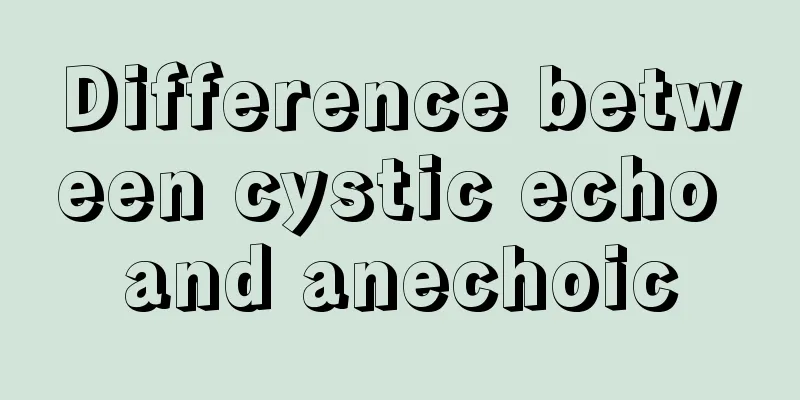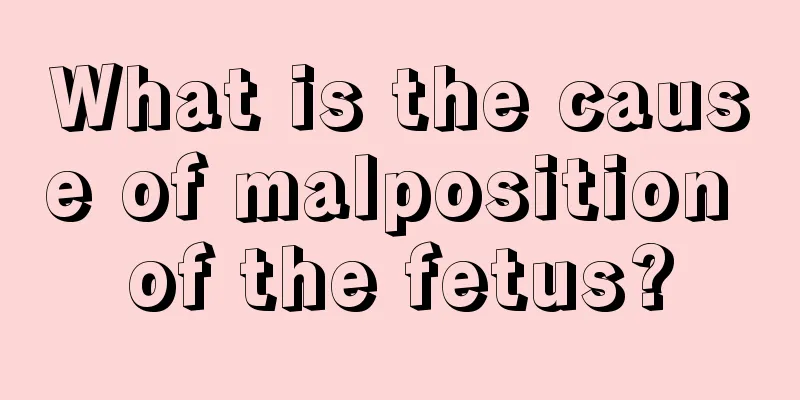Difference between cystic echo and anechoic

|
The biggest difference between cystic echo and anechoic is the presence or absence of a wall. Cystic echo has a wall and contains liquid, while anechoic means there is no wall. The so-called echo actually has a lot to do with the shape and state of the object it touches, so we often judge whether a lesion has occurred based on the echo. It is also widely used in medicine, and cysts are generally echoless. Generally speaking, the cystic echo described on B-ultrasound refers to a cyst, which has a wall and is filled with liquid. However, the echo-free area described on B-ultrasound has no wall and is irregular in shape. The echo-free area should also refer to liquid, which usually occurs when there is bleeding or inflammatory exudation. The echo is most likely a simple ovarian cyst, while the echo is most likely a chocolate cyst, which is a type of endometriosis. Both types of cysts can be treated with ultrasound intervention as the first choice, and no surgery is required. The absence of echo simply indicates that its composition is fluid, i.e. a cyst. Some ovarian cysts are non-neoplastic cysts and generally disappear with the menstrual cycle. You can have another ultrasound check 3-7 days after your next menstrual period. Different objects react to different echoes. It doesn't matter what echo is good or bad. What matters is whether the echo of the object is normal or not. Polycystic ovary syndrome is a syndrome characterized by chronic anovulation, amenorrhea or oligomenorrhea, infertility, obesity, acne, hirsutism and polycystic ovary enlargement. You should exercise more, reduce the intake of high-fat and high-sugar foods, and lose weight to counteract the effects of androgens and promote ovarian ovulation. Cysts are generally anechoic, that is, liquid, and some may be impure, that is, uneven anechoic areas or impure cystic cavities. The absence of echo simply indicates that its composition is fluid, i.e. a cyst. Those without echoes are liquid, while those with echoes are substantial. There is no way to tell the difference between good and bad. If cystic echo is the result of uterine cavity examination, it indicates possible pregnancy. If cystic echo is found in the ovary, it is considered to be ovarian cyst. |
<<: When does delayed menstruation start?
>>: What are the benefits of washing the genitals with mugwort leaves?
Recommend
Do you pee directly into the pregnancy test stick?
Many friends may make mistakes in the use of preg...
Potential risks of the new coronavirus vaccine: How terrible is the ADE effect?
Key points: 1. Antibody-dependent enhancement (AD...
Can OPPO phones hide applications? How do I turn off GPS on OPPO phones?
As people's life demands become smarter, mobi...
There are several shapes of female vulva
With the development of society, people are becom...
How to recover after cesarean section
Many people are familiar with cesarean sections. ...
What is the expected date of delivery in August?
When they are eight months pregnant, many pregnan...
What causes breast tenderness?
Breast tenderness is a symptom. In addition to no...
28 weeks of pregnancy, hard stomach, lack of oxygen
After a woman becomes pregnant, she will begin to...
How to use clotrimazole vaginal tablets correctly
Nowadays, many women are troubled by some gynecol...
How can I relieve vaginal itching?
Problems such as genital itching bother many wome...
What vegetables can you eat while breastfeeding?
Breast milk is the best food for newborn babies. ...
Pregnancy test paper one dark and one light
If the pregnancy test paper shows one dark and on...
Can I eat apples after miscarriage?
Some women have to choose abortion due to many un...
What are the common manifestations of fetal growth retardation?
For pregnant mothers, the most frightening thing ...
Causes of morning leg cramps in women
As the saying goes, the day depends on the mornin...









